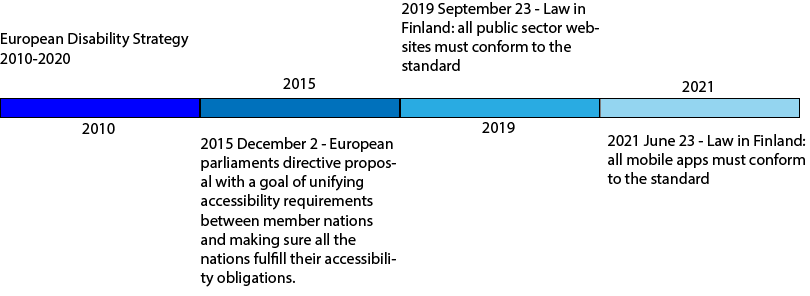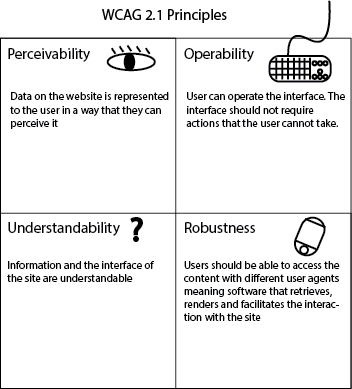The Finnish Act on Transport Services has been described as globally groundbreaking and unique in the field of transport sector legislation. What led to the creation of this law?
Earlier, the transport market in Finland was strictly regulated and guided by public measures. At the same time, however, the digitalisation of transport was emerging, and the digital knowledge, communication and automation were becoming an essential part of all kinds of transportation. Finland wanted to be the forerunner in this section, which led to the development of the Act on Transport Services. One of the reasons behind creating the Act was also to promote fairness of competition in the passenger transport market and competitiveness of the service providers of both passengers and goods transport.
Solution: A unique transport sector legislation
The new Act on Transport Services, created in 2017, aims at proactively supporting new transport services and innovation through significant regulatory change. The Act granted access to data on timetables and pricing of different transport providers and deregulated taxi transport, also allowing third parties to sell transport tickets by opening ticket interfaces.
The Act was prepared in an open manner, in cooperation with different kinds of stakeholder groups and business representatives. As digitalisation was proceeding and intelligent transport systems were being developed further, the consensus was that the Act should enable future transport solutions and improved services to citizens and users.
The Act was expected to promote novel service concepts and innovation in businesses by encouraging old and new actors to rethink. The new legislation also paved the way for new mobility services and applications by removing barriers. These kinds of new services and apps are thought to encourage people to choose for example carpooling, taxi or public transport instead of a car.
Implementation: The Act was carried out in three stages
The Act on Transport Services was carried out in three stages due to its wide-ranging content.
In the first stage, provisions on road transport were brought together under the Act on Transport Services. A significant part of the regulations concerning the transport of people and goods was combined and renewed. The Act eased the regulations in the taxi industry especially.
A central aim of the Act on Transport Services is to promote digitalisation of transport services and more efficient use of data. The data regulation, which aims at creating prerequisites for open data and a better use of data resources, was a central element in the first stage. The Act sets out new obligations for transport service providers regarding the interoperability of information and ticketing systems, as well as the openness of interfaces.
Provisions on air, maritime and rail transport markets and on the qualifications of transport personnel were added in the second stage. The second stage of the Act also continued the opening of data regarding the use of mobility services.
Providing travel chains and combined services was made easier by enabling service provides to act on behalf of another person. This means that a provider of a combined mobility service can incorporate tickets for all modes of transport, car renting services, different kinds of seasonal and serial products and discounts by acting on the customer’s wishes and on their behalf.
Viewed from the international perspective, in Finland the authorities’ registers are very precise and exhaustive, and better utilisation of them could be a significant competitive factor. Reform of the regulation on transport registers strengthens the possibilities of those in the register to use their own data themselves and to benefit from better mobility services. The reform means considerable deregulation, as about ten current registers relating to transport and the separate laws concerning them were consolidated to form one integrated register of transport affairs that contain data on operator permits, transport vehicles and personal licenses such as professional qualifications.
The third stage of the project finalised the Act. Provisions were laid down on professional qualifications, preparedness, opening up of postal information for development purposes, and positioning in heavy road transport and railway and rail transport.
The Act entered into force, for the most part, on 1 July 2018.
Results: In legislation, mobility is now seen as a whole
The Act on Transport Services is an extremely extensive regulation reformation that brought together and streamlined regulation, enabled deregulation of transport markets and created globally groundbreaking regulation. In legislation, mobility is now seen the same way as in peoples´ everyday lives: not as single bus lines or railways but as a whole.
The user orientation and data regulation involved in the Act aligned Finland with the global forerunners in promoting a large-scale change in the transport market. By enabling new kinds of mobility services, we are striving for better fluency and safety of transports as well as significant emission reductions. New mobility services are also expected to reduce the use of private cars and enable the huge potential growth of service market.
Along with the data regulation in the Act on Transport Services, mobility service providers have opened a wealth of interfaces for essential data, and the opening of sales interfaces has also started. According to feedback from operators, new services and systems have actively been developed.
The number of companies and drivers in the taxi field has increased considerably, and the services and pricing models seem to have diversified.
The key aim of the Act on Transport Services was to support long-term processes of change. Therefore, final conclusions about its effects should only be drawn later.
Finland recognised for implementing forward-looking policy
Act on Transport Services has gained international recognition. Finland was awarded an important recognition for its merits in implementing a forward-looking communications policy and legislation. The GSMA Government Leadership Award was presented to Finland in Barcelona on 26 February 2019.
In the award justifications, Finland was praised for its forward-looking communications policy as part of the transformation of transport. The new Act on Transport Services in which data is seen as an integral part of the transport system, as the fifth mode of transport, was mentioned as one of Finland’s central achievements.

 HSL Journey Planner is a service provided by Helsinki Region Transport (HSL) that in essence provides users the quickest route from point A to point B using multimodal routing. On top of getting the user to their destination in time, HSL Journey Planner also provides information about closest stops, routes, possible disruptions and vehicles in real-time.
HSL Journey Planner is a service provided by Helsinki Region Transport (HSL) that in essence provides users the quickest route from point A to point B using multimodal routing. On top of getting the user to their destination in time, HSL Journey Planner also provides information about closest stops, routes, possible disruptions and vehicles in real-time. Last winter HSL.fi and its Journey Planner part was overhauled and a new version was released. The new version of the UI focuses on giving users the most essential information by reducing noise, and providing more contextual information such as the closest stops near the user.
Last winter HSL.fi and its Journey Planner part was overhauled and a new version was released. The new version of the UI focuses on giving users the most essential information by reducing noise, and providing more contextual information such as the closest stops near the user.
 WCAG2.1 standard provides four basic principles, which are base for set of requirements that aim to ensure that as many people can access the information as possible. Fulfilling the WCAG2.1 standard does not automatically mean that the site is accessible by everyone but it is the best unified standard we have available.
WCAG2.1 standard provides four basic principles, which are base for set of requirements that aim to ensure that as many people can access the information as possible. Fulfilling the WCAG2.1 standard does not automatically mean that the site is accessible by everyone but it is the best unified standard we have available.